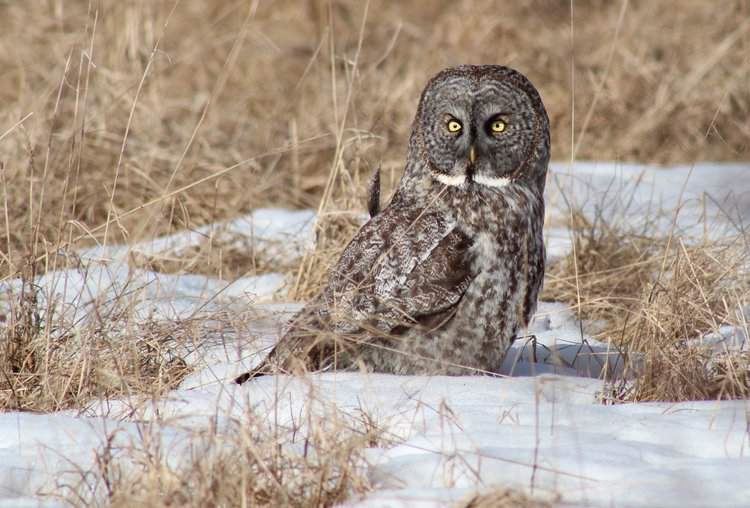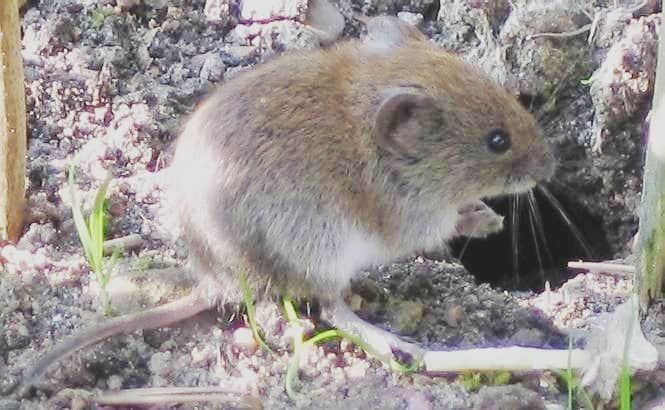New research reveals the hunting secrets of the Manitoban bird

The Great Gray Owl (Strix nebulosa). Photo by Drsarahgrace, public domain.
A new study in Manitoba provides some insights into how the “Great Gray Owl,” a common site over the plains and in the forests of the eastern Canadian prairies, overcomes many obstacles to find its prey.


PHOTO 1: The prairie vole (Microtus ochrogaster). Photo by Soebe, public domain.
The bird is able to "punch" through as much as 50cm (or 20 inches) of hard, crusty snow—enough to hold the average person’s weight—to catch a vole hiding beneath—a small rodent that often serves as a meal for the winged predator.
But the snow presents the owl with other problems way before the “moment of capture,” too. Not only does snow hide its prey from sight, forcing the bird to rely only on its hearing, it weakens any sound the vole is making. It even "bends" or refracts the sound, creating an “acoustic mirage,” or false impression of its location (above). The denser the snow, the more pronounced are both the attenuation and refraction.
The owl soars towards its prey from its perch, then hovers as directly over it until it reaches a “listening position” of least refraction and weaken - defeating that "acoustic mirage" in the process. Then, it plummets straight down on its target, forming a “plunge-hole” in the snow.
The owl is superbly adapted for this. While it has no ear tufts, it has the largest “facial disc” of any owl. That's where its ring of feathers filters and amplifies sound at its ears. This also allows it to pick up low-frequency sound, the kind that transmits best through snow. And its wing feathers are formed in such a way as to allow it to fly and hover more quietly than just about any bird, anywhere.
With a wing span of well over a metre, It’s the largest owl in North America. It can be found across the province of Manitoba year-round.
And, since Manitobans “adopted” the “Great Gray” in 1987, it’s been its official provincial bird, too.
A three-member team, two from the US, along with James Duncan from “Discover Owls” in Balmoral, Manitoba, used loudspeakers and special cameras in their research.
The above images were extracted, with thanks, from the team's official study, published in the proceedings of The Royal Society.
By: Larry Powell
Larry is a veteran, award-winning “eco-journalist” living in Shoal Lake, Manitoba. He belongs to The Science Writers & Communicators of Canada, The Canadian Association of Journalists and is a past member of The American Association for the Advancement of Science. He specializes in stories about agriculture, the environment and the Earth Sciences.
Follow Larry's Blog: www.PlanetinPeril.ca and Twitter: @LarryPo54406341
